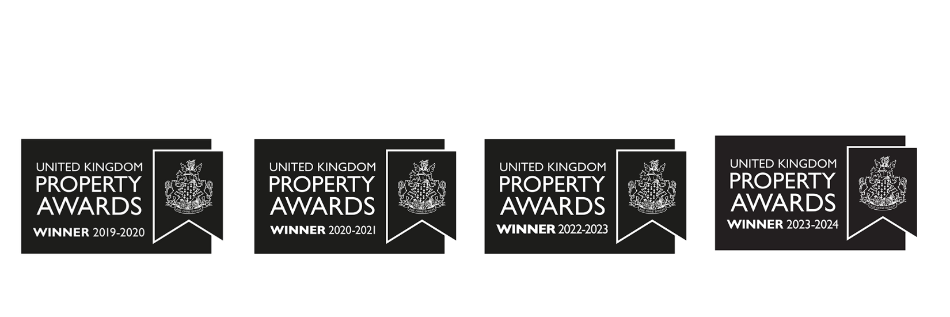We’ve listed all you need to know about Buy-to-Let mortgages, and what you need to think about beforehand.
1. Affordability
The primary concern when starting to look into getting finance. Remember, when purchasing a buy-to-let property, mortgages do have tougher criteria to meet. If the property is your first, then you will have to prove that you can afford to pay the mortgage if you have any void periods in your rental calendar. Rental income alone is not enough, as the lenders will seek to ascertain your ability to pay, even if the property isn’t rented. In addition, this usually means that unlike a traditional homeowners mortgage, the increased risk will lead to a more expensive mortgage.
2. Types of Mortgage
There are several types of mortgage, but generally there are just two main categories: Interest-Only and Repayment Mortgages. Obviously, there are variations on these themes with the terms, for example tracker or fixed-rate mortgages, but they will all fall into the categories of either one that only covers the interest payments leaving the principal unpaid, as these tend to be the most popular, and the cheapest. The other option is when you will repay both the interest and principal, but these are relatively expensive and usually avoided by many investors. However, if an investor is building for the future and does not require the funds immediately, then a repayment method is a wise choice.
3. The Size of a Deposit
Typically, when purchasing a property to live in, you can have as little as 5% to place down as a deposit. However, with buy-to-let the requirement for a larger sum is mandatory. The lowest deposit tends to be sat around the 20% mark, but we suggest typically looking for a 25-35% deposit when applying work on a higher figure. This not only opens up more lenders, but also gives a true reflection of where the market is presently.
4. Interest Rates
The cost of your mortgage does vary, depending on the type or size, but one thing remains equal to all: if interest rates move, so do mortgage rates. This is unless you have arranged a fixed rate for a fixed term. So, why fix your mortgage rate? Simply put, once you have fixed your rate you will know your outgoings from the outset, avoiding any surprises. Fixing your costs from the outset also allows you to budget with certainty, insulating you from any interest rate changes in the near term. The one word of caution when taking one of these mortgages is that generally, once the fixed term is over, you typically return to the mortgage providers basic variable mortgage rate. It may be worthwhile to take a closer look at that when choosing, in order to give yourself more flexibility in the future.
5. Buy-to-Let Mortgage Criteria
These types of mortgages require a more robust financial assessment, as most lenders like to protect themselves from rental void periods or tougher economic conditions and as such, require your rental returns to be in excess of 125% of the cost of the mortgage. Typically, they often look to a figure of 140%, meaning someone who has a mortgage cost of £600 will require rental of around £840 to achieve the required level of borrowing. Given the stricter buy-to-let lending criteria, you may think that buy-to-let mortgages will be harder to get than residential ones. However, as long as you satisfy all of the provider’s buy-to-let mortgage criteria, there’s no reason why the process shouldn’t be just as smooth as residential mortgage processes can be. As long as you’ve done your homework and have all your paperwork ready to go, you can arrange a buy-to-let mortgage in just three to six weeks, which is similar to how long a residential deal can take. So, buy-to-let mortgages may not be easier, but they won’t necessarily be harder to get either. If you are unsure as to what you need to do, you may want to consider the services of a mortgage broker.
6. Qualifying for a Buy-to-Let Mortgage
Interestingly enough, there is actually an age criteria which most banks and building societies insist on and that is a minimum age of 25. In addition to this, there is a minimum income level of £25,000 before you can qualify for this type of mortgage. Also worth noting is that most buy-to-let lenders will limit the amount of mortgaged properties you are able to have, and that tends to be between 3-5 properties and a sum cap of around £2m. Also there are new rules around borrowing and anyone with 4 or more properties will be required to show full financial information on each property rather than just showing their top line profit. This may mean that anyone with a heavily leveraged portfolio may struggle to get extra finance.
7. Repaying the Mortgage
Most landlords view property as a long-term investment, and tend to opt for interest-only products, as the cost of these tends to be lower when compared with a repayment type, maximising the income he or she can earn. Their view is that if and when they ever look to sell the property, the original capital owned will be covered by the value of the property which they assume will have increased over the years. It is important to remember however, that the price of a property can go down as well as up, so there are some risks attached to this policy, but it is one most landlords are prepared to take.
We hope that this helps to give you a general idea of what the main considerations are, and will help guide you when making a decision on your buy-to-let mortgage. For more information, or to speak to one of our property specialists, please get in touch.



